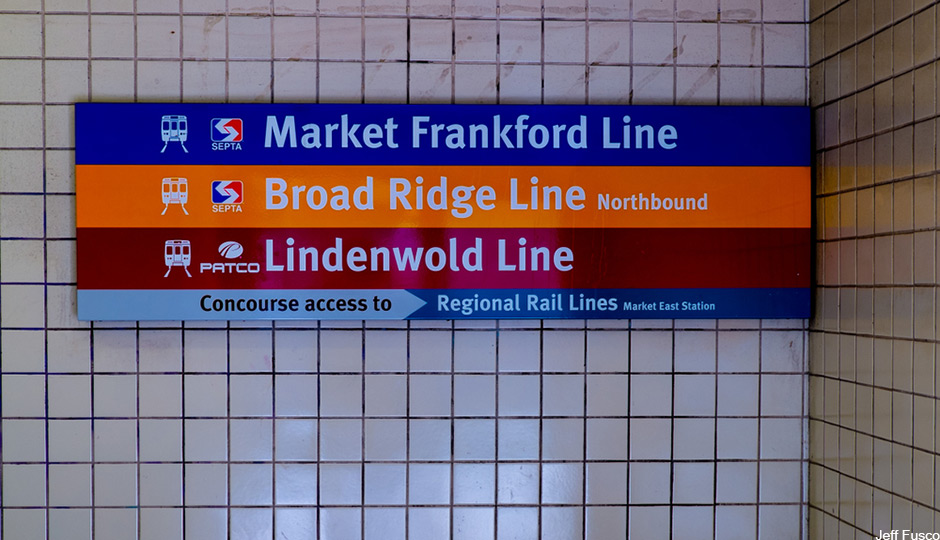Philly’s Public Transit Is Amazing. Why Don’t More of Us Use It?

Those of us who follow public transportation in Greater Philadelphia assiduously can rattle off all the ways it falls short of our ideal vision, or lacks what can be found in other large cities.
But truth to tell, this city has a public transit infrastructure that puts those of many other large American cities to shame, and the agencies responsible for running it have by and large done a decent job of keeping us moving on it.
Those of us who use it, that is — and for a city this size, that number is surprisingly small.
That point came home to me in a recent policy discussion where it was brought up that in only four U.S. metropolitan areas do more than 10 percent of residents use mass transit to get to and from work, according to Census Bureau data: New York, Chicago, San Francisco-Oakland and Washington, D.C.*
My response to that statistic: Why isn’t Philadelphia on this list?
So I decided to put the question to those who do the traveling. And while the answers I got were not legion, one in particular was striking in how it included just about any reason one might think of in response to the question, How could we boost that share?
That response came from Joseph Russell of Collingswood, N.J. Russell already uses mass transit as much as he can. Both he and his wife regularly commute on PATCO when they come to work in the city, and he uses SEPTA for leisure trips of all kinds. He’s also quite the world traveler when it comes to mass transit: He has used it in all of the U.S. cities that rank above us save Boston, and in Amsterdam, London, Lyon, Montreal and Paris to boot. That’s enough of a track record to give his observations about mass transit in Philly some weight. Here are just a few of the things he sees around here that could be done better:
Marketing. This is perhaps the easiest improvement of all to implement, and it wouldn’t take much for our transit agencies to up their game here. “In New York with the MTA, Boston with the T, or London with the Tube, you get the idea that those networks are treated as a prized brands,” he wrote. “There are often slick ad campaigns, user-friendly websites, helpful signage, or other things that make it seem like the agencies care about their outward appearance and helping customers use it as best they can.”
Here, he says, not so much. SEPTA’s website, for instance, looks amateurish compared to the MBTA’s, and both it and PATCO’s are much less user-friendly, he said, adding that PATCO’s was largely out-of-date. To be fair, SEPTA has done its share of marketing over the years, including several very clever ad campaigns, and it’s done a very good job of getting into social media, but its overall marketing effort has been episodic rather than sustained and often lacks key components. For instance, Russell overheard a South Jersey mother on PATCO tell her son flatly that he could not get to a Phillies game on mass transit. Russell also singled out the Airport Regional Rail line as a botched marketing opportunity — frequency, fares and lack of information and services at the airport all combine to make what should be a hit with visitors into a traveler turnoff.
Service frequency, especially on SEPTA Regional Rail. PATCO’s rapid-transit-style frequency makes it convenient for South Jerseyites to hop on a train into town when they feel like it. In contrast, he noted, most Regional Rail lines run hourly off-peak, a real turnoff for the casual traveler. Even increasing the frequency to half-hourly would, he contends, produce real gains in ridership.
Fare payment. SEPTA’s New Payment Technology will fix this problem, but there remains the issue of coordination with other agencies’ systems.
More and better infrastructure, with development that capitalizes on it. “The truth is that no matter how efficient and friendly SEPTA or PATCO are, people often want to get to places that just don’t have great access from point A to point B,” he wrote. Like many advocates, he has rail transit in mind when he raises this issue, and our track record on providing it has indeed been less than stellar by a long shot. But when you consider the history of funding mass transit in this region, maybe the more wondrous thing is that we have the infrastructure we have at all. But what we do have could be used more intensively with the right kind of development. There’s not enough of that either, he said, and he’s right.
What would get you to use our region’s mass transit services, or use them more — if indeed anything would? And if nothing would, why do you prefer the means of travel you do use? Send your replies to regional.rail.numbers@gmail.com and I’ll share some of the best ones in a followup.
Follow Sandy on Twitter: @MarketStEl.
(*Most data on transportation in American cities focuses on the journey to work, the largest single category of trips taken, and when you break out the city alone, Philadelphia does much better than most U.S. cities: More than 25 percent of all journeys to work within the city itself take place on public transportation, according to the latest Census Bureau figures. That puts us sixth among large U.S. cities, behind New York, Washington, Boston, San Francisco and Chicago, in that order.)


